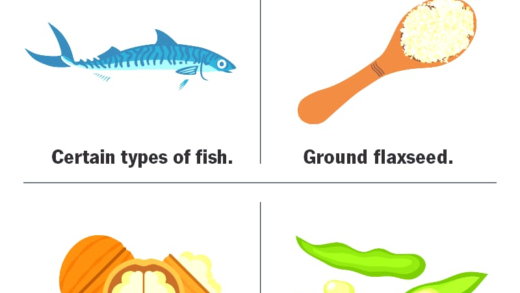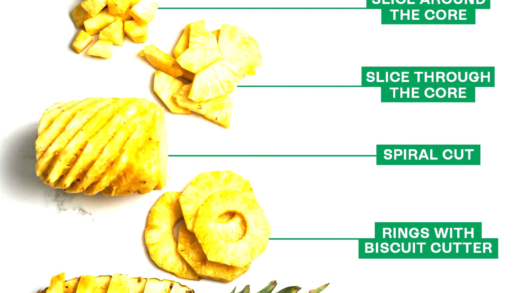Tinfoil on hubcaps is a popular myth for evading radar, but its effectiveness is limited. Police radar works by measuring the Doppler effect, making it challenging to disrupt. While some anecdotal success stories exist, they lack solid evidence. Alternative methods like radar detectors and GPS apps offer more reliable solutions. Compared to specialized radar-absorbing materials, tinfoil is ineffective. Legal issues also arise from vehicle modifications. Overall, drivers should consider safer, more effective strategies to avoid speeding tickets.
What’s the Deal with Tinfoil on Hubcaps?
Tinfoil on hubcaps has become a curious trend among some car enthusiasts and those looking to evade police radar. The idea is simple: wrap your hubcaps in tinfoil to confuse radar systems. But why do people think this works? The belief is that by reflecting radar signals, drivers can avoid being detected for speeding. This practice, however, raises questions about its effectiveness and legality.
Many believe that using tinfoil on hubcaps acts as a shield against radar waves. Some enthusiasts even claim success stories, suggesting that it can help evade tickets. However, the reality is more complex. While tinfoil may offer some level of signal interference, its practical application for radar evasion is questionable. Moreover, using tinfoil can lead to other issues, such as vehicle aesthetics and potential legal ramifications.
How Does Police Radar Work?
Understanding how police radar works is crucial to grasping the effectiveness of any radar-evading techniques, including the use of tinfoil on hubcaps. Police radar systems emit radio waves that bounce off moving vehicles. The radar device then calculates the speed based on the frequency shift of the returned signals, known as the Doppler effect.
Most radar systems operate in the microwave frequency range, typically between 10 GHz and 35 GHz. This frequency range allows radar to detect vehicles even at significant distances. The technology is reliable and widely used by law enforcement agencies to monitor speed limits.
In essence, when a radar signal hits a car, it reflects back to the radar gun, allowing the officer to determine the vehicle’s speed. Therefore, the effectiveness of any method to avoid detection hinges on how well it can disrupt this radar signal.
Can Tinfoil Really Reflect Radar Signals?
The question of whether tinfoil can effectively reflect radar signals is a hot topic among those considering this unconventional method. Tinfoil, or aluminum foil, is a conductive material, which theoretically could reflect some radar waves. However, its ability to do so effectively is limited.
While tinfoil may scatter certain frequencies, the effectiveness of this method varies widely. Factors such as the thickness of the foil, the angle at which radar waves hit the surface, and the type of radar used all play significant roles. In many cases, the radar signals may still penetrate or bypass the tinfoil entirely.
In conclusion, while the use of tinfoil on hubcaps might seem like a clever trick to avoid police radar, the practical application and effectiveness are often overstated. It is essential to consider both the scientific principles of radar technology and the real-world implications of attempting such methods.
What Materials Effectively Block or Reflect Radar?
When it comes to blocking or reflecting radar signals, tinfoil on hubcaps isn’t the only option. Various materials can interfere with radar technology, and understanding these can help clarify why some drivers seek alternatives. Here’s a quick rundown:
- Metal Sheets: Thicker metals, like steel or copper, can effectively reflect radar waves due to their density and conductivity.
- Radar-Absorbing Materials (RAM): These specialized materials are designed to absorb radar waves rather than reflect them, making them more effective than tinfoil.
- Foam Composites: Some foams, particularly those infused with metallic particles, can reduce radar signal strength.
- Carbon Fiber: This lightweight material can also disrupt radar signals, though it’s more commonly used in high-performance vehicles.
- Paints and Coatings: Certain paints designed for military applications can help in absorbing radar waves.
While tinfoil may offer a DIY solution, it’s clear that there are more effective materials out there. Many of these alternatives are used in specialized applications, such as military vehicles or stealth technology, showcasing their superior capabilities.
Legal Considerations of Modifying Vehicles
Using tinfoil on hubcaps can lead to potential legal issues. Vehicle modifications, especially those aimed at evading law enforcement detection, can be scrutinized under various laws. Here are some key points to consider:
- Vehicle Safety Regulations: Many regions have strict regulations regarding vehicle modifications that can affect safety and visibility.
- Traffic Laws: Modifications perceived as deceptive, such as using tinfoil to evade radar, may lead to fines or more severe penalties.
- Insurance Implications: Modifying a vehicle without notifying your insurance provider can result in denial of claims or increased premiums.
- Local Laws: Different states or countries have varying laws regarding vehicle modifications, making it crucial to research local regulations.
Before considering any modifications, it’s wise to consult with legal experts or local authorities. Ignoring these legalities can lead to unexpected consequences, including hefty fines or legal battles.
Downsides of Using Tinfoil on Hubcaps
While the idea of using tinfoil on hubcaps may sound clever, there are several downsides to this approach:
- Aesthetic Concerns: Tinfoil can make your vehicle look unappealing, which might attract unwanted attention rather than deter it.
- Durability: Tinfoil is not particularly durable; it can easily tear or peel off, especially during adverse weather conditions.
- Limited Effectiveness: As discussed, the effectiveness of tinfoil against radar is questionable. It may not provide the level of protection drivers hope for.
- Potential Legal Issues: As mentioned earlier, using tinfoil could lead to legal repercussions, which outweigh any perceived benefits.
- Increased Risk of Detection: If law enforcement notices a vehicle with obvious modifications like tinfoil, it may raise suspicions and lead to more scrutiny.
In summary, while some may view tinfoil on hubcaps as a creative solution for avoiding radar detection, the associated downsides make it a less-than-ideal choice. Exploring more effective and legal options is advisable for those genuinely seeking to avoid speeding tickets.
Success Stories of Tinfoil and Radar Evasion
There are a few anecdotal success stories floating around regarding the use of tinfoil on hubcaps to evade police radar. Some drivers claim that they successfully avoided tickets after wrapping their hubcaps in tinfoil. The stories often highlight instances where the driver was speeding but was not caught by radar. While these accounts can be entertaining, they lack scientific validation and should be taken with a grain of salt.
One common theme in these stories is the randomness of the encounters with law enforcement. In some cases, the drivers attribute their luck to the tinfoil, while it could simply be that the radar system wasn’t functioning optimally or that the officer was distracted. Ultimately, these stories don’t provide substantial evidence that tinfoil is an effective solution against radar detection.
Alternative Methods to Avoid Speeding Tickets
For those looking to avoid speeding tickets without relying on tinfoil, several alternative methods exist. These techniques range from practical to high-tech solutions:
- Radar Detectors: Many drivers invest in radar detectors, which can alert them to the presence of police radar in the area. While not foolproof, they can provide an early warning.
- GPS Speed Traps: Smartphone apps like Waze can help identify speed traps and alert users in real-time, making it easier to avoid getting caught.
- Driving Within Speed Limits: The most straightforward method is to adhere to speed limits. This eliminates the risk of receiving a ticket altogether.
- Defensive Driving Courses: Taking a defensive driving course can sometimes reduce insurance premiums and may even help in avoiding tickets by improving driving skills.
- Vehicle Modifications: Some drivers opt for stealth modifications to their vehicles, such as using less conspicuous colors or features that do not attract attention.
These alternatives provide more reliable and legal methods to avoid speeding tickets compared to using tinfoil on hubcaps. Investing in technology or improving driving habits can yield better long-term results.
How Effective is Tinfoil Compared to Other Radar-Absorbing Materials?
When comparing tinfoil to other radar-absorbing materials, it becomes clear that while tinfoil may offer some minor benefits, it pales in comparison to specialized materials. Tinfoil can scatter certain frequencies, but its effectiveness is limited by several factors:
- Material Thickness: Thicker materials like metal sheets provide better radar reflection than tinfoil.
- Radar-Absorbing Materials (RAM): These are designed specifically to absorb radar waves rather than reflect them, making them significantly more effective than tinfoil.
- Foam Composites and Carbon Fiber: These materials disrupt radar signals more efficiently and are used in military applications for their stealth capabilities.
In summary, while tinfoil might seem like a quick fix for radar evasion, there are far more effective options available. Investing in proper materials or technologies will yield better results for those truly interested in avoiding detection.





Comments are closed.